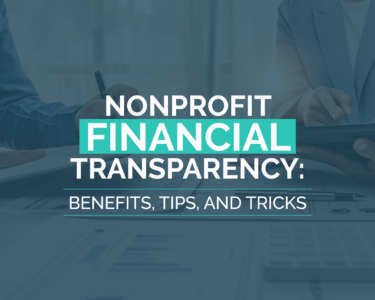This is the second in a series of occasional chats among some of CEP’s staff we’ll be posting on the blog, in which they discuss the current context for philanthropy and nonprofits. In this conversation, CEP President Phil Buchanan talks with CEP Vice President of Research Elisha Smith Arrillaga about the state of U.S. nonprofits, based on new CEP research.
Phil: Elisha, I am eager to talk to you about the 2025 State of Nonprofits report we just released. It’s based on a survey we conducted in February of our Nonprofit Voice Project panel — and it’s pretty sobering. This is the third in what is now an annual report for us, designed to surface to both individual and institutional donors the big issues facing nonprofit organizations. What stands out to you about this one, Elisha?
Elisha: I think this is the most important one. For starters, this was the highest response rate we have had in a research survey at CEP in about a decade: 66 percent. This tells you something about the urgency of the moment, and the desire nonprofits have to communicate to funders about the grave impacts of the current context — and what their needs are. We also received dozens of emails from respondents thanking us for even asking. That is not something that normally happens when we field a survey.
The findings are stark. First, nonprofit leaders describe difficulty pursuing their missions effectively in an environment that presents multiple significant challenges to their ability to operate. Second, while most organizations achieved a balanced budget or surplus in their most recently completed fiscal year, they’re expressing uncertainty about future funding (which includes deep worries about federal funding) and concerns about increased costs. Third, and maybe not surprisingly given what I already said: nearly all nonprofit leaders express concern about their own burnout — and report that burnout is affecting their staff.
Phil: So, what’s a donor or grantmaker to do with this information, Elisha? Is it just the same old mantra? More unrestricted multiyear funding?
Elisha: Of course that is crucial, yes. Flexible and dependable funding is always vital — and even more so in a time of crisis and unpredictability when nonprofits will need to pivot quickly. But what we’re hearing from nonprofits in this survey is also a desire for more communication from their funders, as shared in a rapid response report we published in March, based on some of the same survey data. They want to know how funders are thinking about this moment, what they’re doing. Nonprofits always want meaningful relationships with their funders, but that is even more true in this time of uncertainty and, frankly, fear.
Phil: Is there a quote — an open-ended comment — from the survey that stuck with you, Elisha, and that captured this sentiment?
Elisha: Yes — of all the hundreds of comments I read this one really stuck with me. One grantee wrote: “It is tough to do business as usual when our world and our core values are being challenged at every turn. How loudly should we raise our collective voices if doing so puts people at risk, and how might we channel the activism of the past and care for our communities responsibly and for the long haul?”
Phil: Those are big questions. I read into this, and to other comments we analyzed, a desire from nonprofits to see their funders showing courage, and boldness. How do you assess the response of institutional grantmakers to the challenges we have seen since inauguration day, which have of course included cuts to federal funding to nonprofits?
Elisha: I will be honest, Phil. I was disappointed, at least initially, by the number of funders who I felt were not recognizing the level of challenges being faced by nonprofits. On the other hand, I think as we have talked to foundation leaders over these months, I have realized it’s not always so easy to get alignment quickly. It can take time to bring a board along, for example. Still, I’ve been impatient for more short-term action as we see federal funding cuts affecting organizations from food banks to after school programs. I know philanthropy can’t close all those gaps and that long term strategy is also important, but it is also true that in some cases swift action is needed.
In the past month or two, though, I have found more hope in the increasing number of funders I see taking bold action, including stepping up spending levels. Then, earlier this month, we saw the announcement that the Gates Foundation would grant away all its assets in the next two decades and, whatever the impetus may have been, I thought that’s huge! I hope it’s a call to action for others. I hope it spurs others to think boldly about what they might do.
Phil: Yes, me too. I have always been a defender of the idea that some foundations might want to exist for the long haul — and that this can be a very good thing for our society — and that others might, given their particular goals, want to spend down more rapidly. But I also believe extraordinary times call for extraordinary responses and so I hope we see more funders step up their giving levels, even if temporarily.
Elisha: Yes, we need to sector to stand in the gap in some ways. We need it to rally in support of the most vulnerable.
Phil: That’s a good segue to another issue in the report: burnout. Because all this crucial and urgent works takes a toll. I was struck that 90 percent of nonprofit leaders said burnout is affecting their staff—and 58 percent say it is moderately or significantly affecting their staff.

The data was similarly stark when it comes to nonprofit leaders themselves and their sense of their own burnout. What can be done about this?
Elisha: It’s tough because some of the traditional interventions, although important (think sabbaticals, wellness programs), can feel less practical in this moment. We’ll need to think outside of the box and be more creative. Like how do we work in an environment of intentionally-created chaos and upheaval? I think one answer is collectively bearing the burden. No one can shoulder the load alone. We need to come together and work collaboratively.
Phil: Yes! I said something similar recently to a group of foundation CEOs. Obviously, our report is about nonprofits but there is no doubt that many foundation leaders and staff are feeling the burnout too. Even individual donors may be feeling it as they try to respond.
Elisha: Yes, I have been excited to see different groups of funders and nonprofits coming together to work collaboratively in this time.
Phil: I often hear people, when talking about persevering and not burning out, say “it’s a marathon not a sprint” but that doesn’t feel quite the right analogy to me — because honestly sometimes sprinting is necessary. I know you’re a runner. What do you think?
Elisha: I think it’s like a HIIT workout!
Phil: Is that like intervals or something?
Elisha: Exactly. High-Intensity Interval Training. Finding those moments of rest is going to be key — to allow our collective muscles to regenerate. On that point, I want to flag one other area of the report, which relates to the financial engine of organizations. While at the time of the survey, in February, most leaders were reporting strong financials for their most recently completed fiscal year, as I mentioned at the outset, it gets grimmer when they look to the future.
So, for example, 42 percent reported a surplus in their most recent year but only 18 percent are expecting one in their current year. And, of course, the concern about the loss of federal funding for those organizations that receive it cannot be overstated.

Phil: Really stark, Elisha, and I know we will be tracking this in another survey of our Nonprofit Voice Project panel very soon.
Elisha: That’s right, more to come.
Phil: Thanks, Elisha. And thanks to you and your team for all your work to gather this data and put this report out. Appreciated this chat.
Read “State of Nonprofits 2025: What Funders Need to Know” and join us for a conversation about the report on July 10 (register here).
Phil Buchanan is president of the Center for Effective Philanthropy, author of the 2019 book Giving Done Right: Effective Philanthropy and Making Every Dollar Count, and co-host of the Giving Done Right podcast. Elisha Smith Arrillaga, Ph.D. is vice president, Research at CEP. Find her on LinkedIn.
👇Follow more 👇
👉 bdphone.com
👉 ultractivation.com
👉 trainingreferral.com
👉 shaplafood.com
👉 bangladeshi.help
👉 www.forexdhaka.com
👉 uncommunication.com
👉 ultra-sim.com
👉 forexdhaka.com
👉 ultrafxfund.com
👉 bdphoneonline.com
👉 dailyadvice.us




